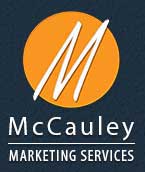Anatomy of an Effective Client Survey
 Whether you’re in advertising or not you’re probably familiar with marketing surveys. There has long been a negative connotation with surveys because they’re (traditionally) viewed as too time consuming to be effective. It’s important to note however, that the rules of surveys have changed dramatically with social media and mobile marketing. Surveys are an ideal tool for gathering additional information about your audience: pinpointing the demographics within your business’ community and identifying exactly what your business can (or should) provide. Below is a list of the ingredients, if you will, of a worth-while marketing survey for consumers to ensure their time is being well spent and for business owners to use as a guide when writing surveys.
Whether you’re in advertising or not you’re probably familiar with marketing surveys. There has long been a negative connotation with surveys because they’re (traditionally) viewed as too time consuming to be effective. It’s important to note however, that the rules of surveys have changed dramatically with social media and mobile marketing. Surveys are an ideal tool for gathering additional information about your audience: pinpointing the demographics within your business’ community and identifying exactly what your business can (or should) provide. Below is a list of the ingredients, if you will, of a worth-while marketing survey for consumers to ensure their time is being well spent and for business owners to use as a guide when writing surveys.
- They wear their name tag prominently. Any company who deserves to know your consumer insights should identify themselves clearly. DO NOT divulge any personal information to organizations who seek to remain nameless—it’s an invitation for identity theft. If you’re completing a survey online that asks several personal data questions (i.e.- birthday, address, gender, etc.) make sure they have a privacy policy clearly stipulated.
- They say what’s in it for you. Even business owners who are only slightly versed in customer relationship management realize that your time is precious. The companies who are willing to reward you for your contribution, be it through a special offer or personalized acknowledgement, tend to be the ones more likely to remember your assistance and help you in the future.
- They are clear about their survey’s goals. To further minimize the risk that your data is mishandled make sure any survey you complete has a clearly defined goal. Maybe the company is expanding its services menu and wants to see what additional services you, as an existing customer, might be interested in. If a surveyor expects you to be specific in your responses they should be even more specific about their motives.
- The response choices are clear. Make sure to reserve the multiple choice answers like “always A”, “always both A and B”, etc. for the next high school chemistry exam you write. Yes, it’s easy for survey takers to bubble-in, but you’ll end up with a pool of responses that give you no hard statistical data from which to learn. Instead, opt for yes or no questions that give the respondent an opportunity for further explanation if they chose.
While this is by no means an exhaustive list, we hope it will provide you with a quick reference guide as to what consumers anticipate when formulating client surveys. To learn more about the marketing research and advertising services at McCauley Marketing visit our website and continue to read our blog.
